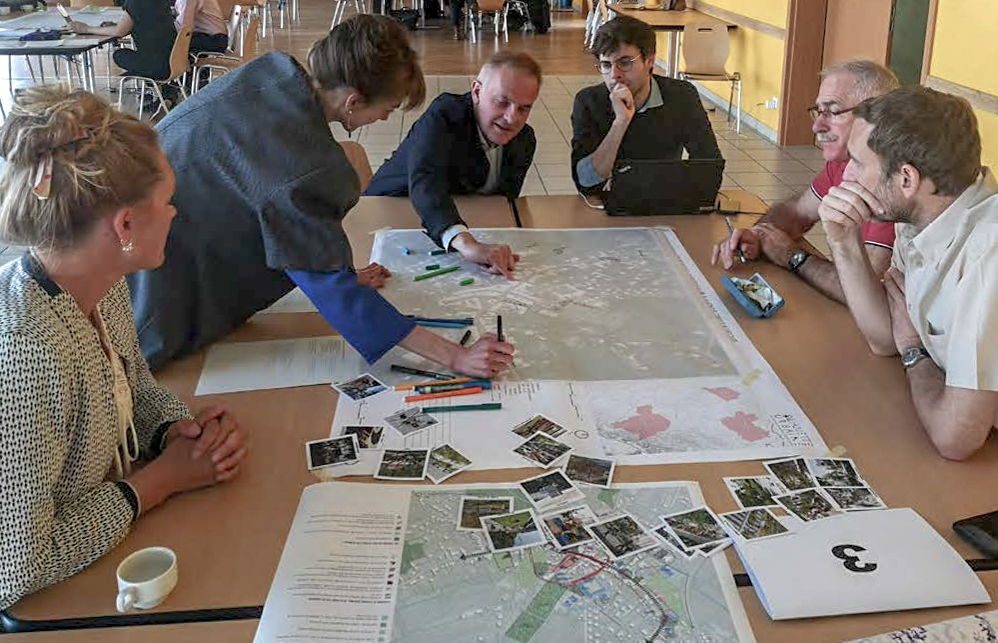Imagine, prefigure, co-construct
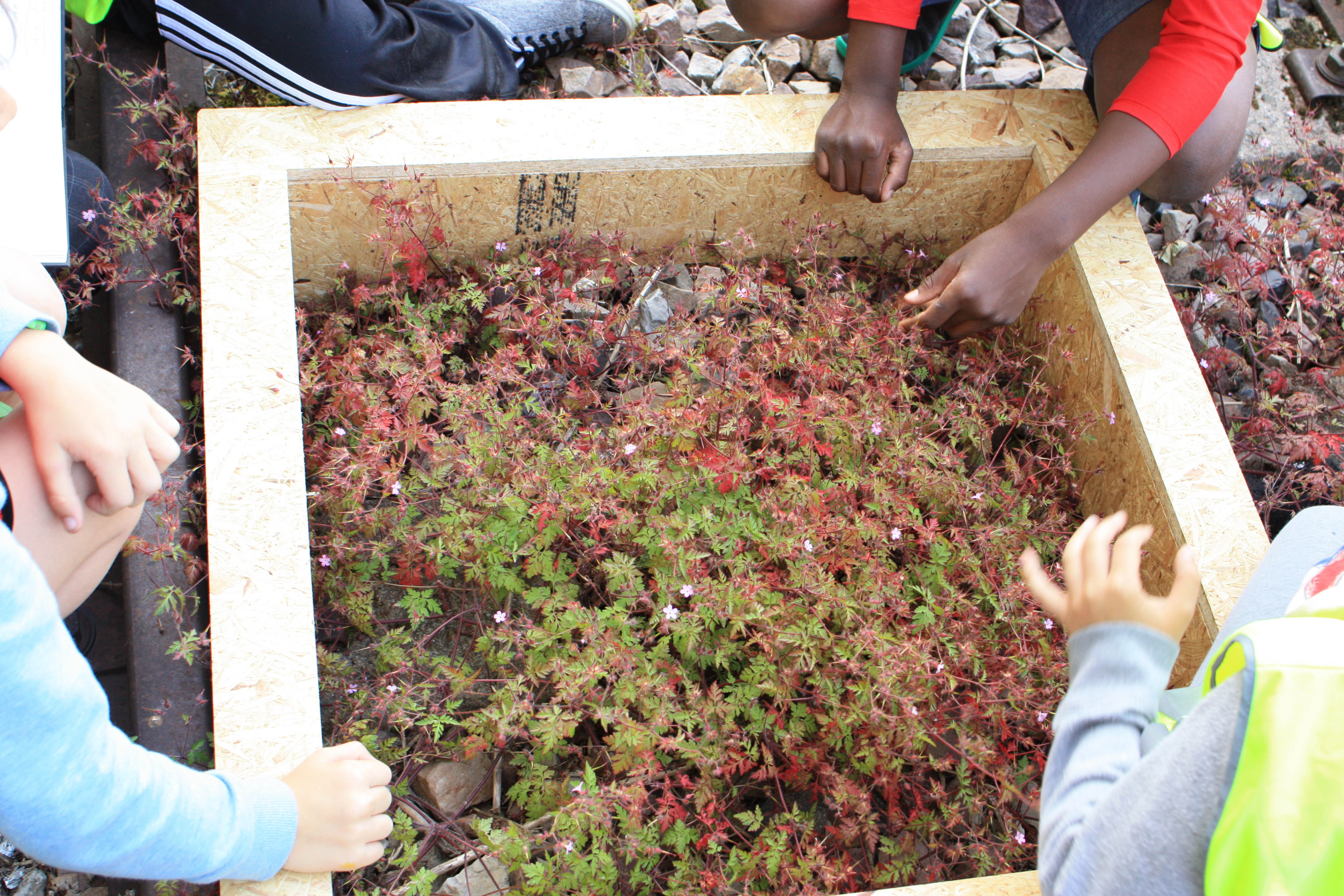
MARCH / ARPENTAGE
The March Atlas : surveying at the crossroads of ordinary and remarkable landscapes.
According to the American geographer JB Jackson, the term “march” was a gothic term used to describe the forest. It referred to the border of the woods, a limit between inhabited civilization and the wilderness of northern Europe. The edge of the forest was considered the border of the community, the border between man and nature. But this edge was also a space that served as an interstice with varying uses throughout the changing seasons. Reflecting this duality of the term, the modern word “march” originates from the combined words “margin” and “merge”.
Gathered by landscape, our collective work is formed through our shared passion of the land. Our process involves visiting the sites that we use, and if possible, inviting the future users of the site to do the same. We collectively immerse ourselves into the environment with all of its particularities and enrich ourselves with different ways of looking at these edge conditions. It is an exercise of attempting to understand the place’s existing practices, values, and its systems. We will focus on the edges between urban and landscape to study the ongoing dialogue with the adjoining fabrics and in order to identify the qualities of the site in the context of its environment.
Through these observations, we produce a carefully assembled atlas of edges on several scales, urban and landscape sequences as well as the larger landscape scale. These studies allow us to establish an in-depth knowledge of the territory and further enable the identification of blocking points and assets on which to work on in order to carry out the preliminary studies in a coherent manner. These studies consist of revealing, quantifying and mobilising the material, plant, human and non-human resources that the site contains to initiate its transformation. Nourished by readings and analyses of pre-existing documents and studies, we thoroughly account for the site in a plethora of different perspectives.
Le March Atlas : arpentage à la croisée des paysages ordinaires et remarquables.
Selon le géographe Américain JB Jackson, le terme march provient de l’époque des goths et évoquait la forêt. Cet espace correspondait à une zone de frontière, une limite entre les enclaves habitées et la nature sauvage du nord de l’Europe. Le bord de la forêt était considéré comme l’extrémité de la communauté.Ce repère était aussi un interstice qui variait au cours des saisons et pouvait porter des usages multiples. En langue anglaise, le mot March est à l’origine de margin (marge) et merge (mélanger).
Fédérer autour du paysage nous invite à définir et qualifier ce bien commun, à partager la lecture qui en est ainsi faite autour d’un ouvrage collectif. Nous allons à la rencontre des lieux et si possible des usagers pour nous imprégner du site et de ses singularités, nous enrichir des différents regards portés sur les bords et l’épaisseur. Il s’agit de comprendre ses pratiques, ses valeurs. Nous nous concentrerons sur les lisières urbaines et paysagères pour étudier le dialogue en cours avec les tissus attenants et identifier les leviers de qualification du site à son environnement.
Nous produisons avec la matière ainsi glanée un atlas sensible des bords sur plusieurs échelles, des séquences urbaines et paysagères mais également du grand paysage. Cet état des lieux nous permet d’établir une connaissance approfondie du territoire d’étude et d’identifier clairement les points bloquants et atouts sur lesquels travailler pour mener de manière cohérente les études préalables. Faire l’inventaire, c’est révéler, quantifier et mobiliser les ressources matérielles, végétales, humaines et non humaines dont le site recèle pour engager sa transformation. Cet inventaire se nourrit des lectures et analyses des documents et études préexistants.
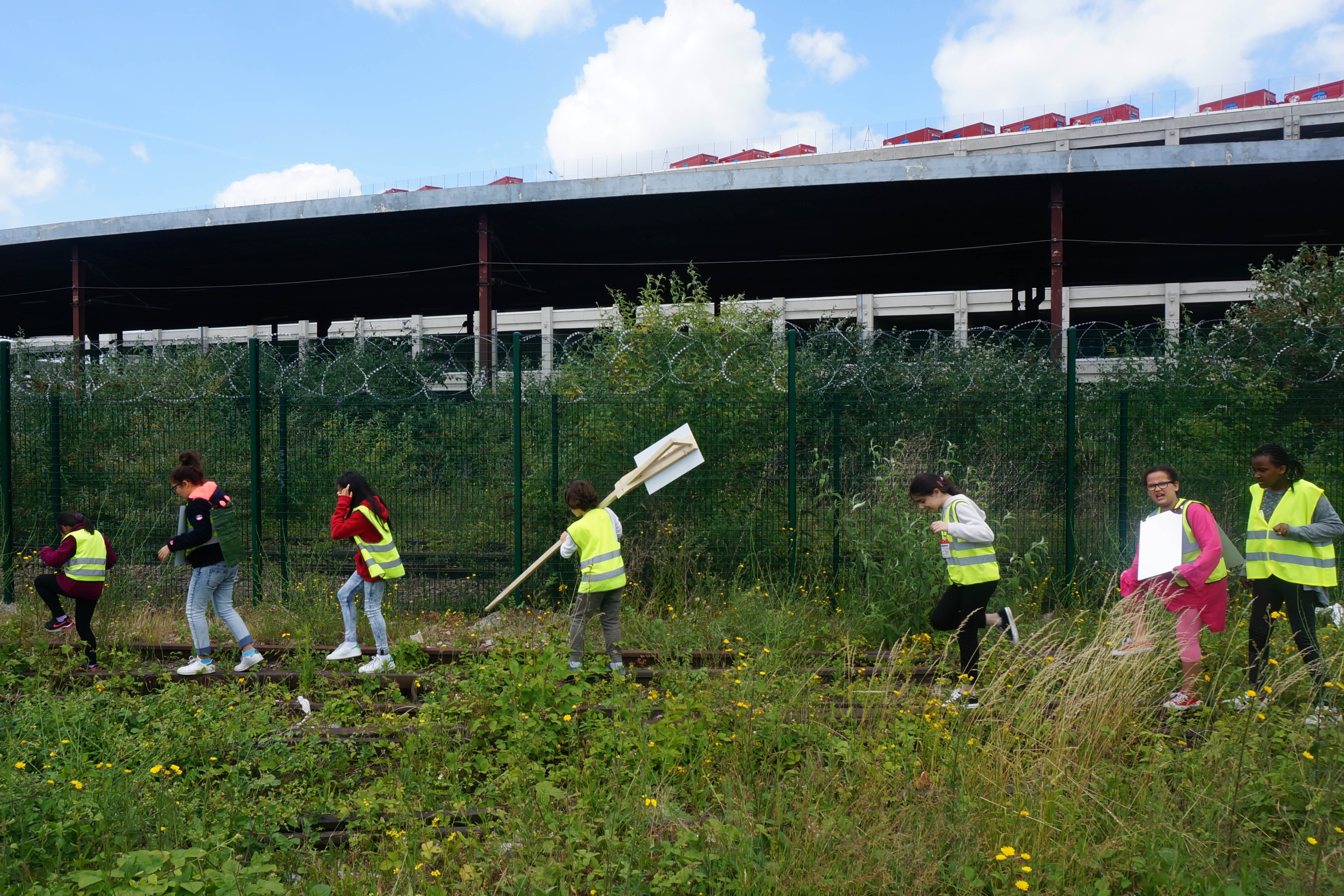
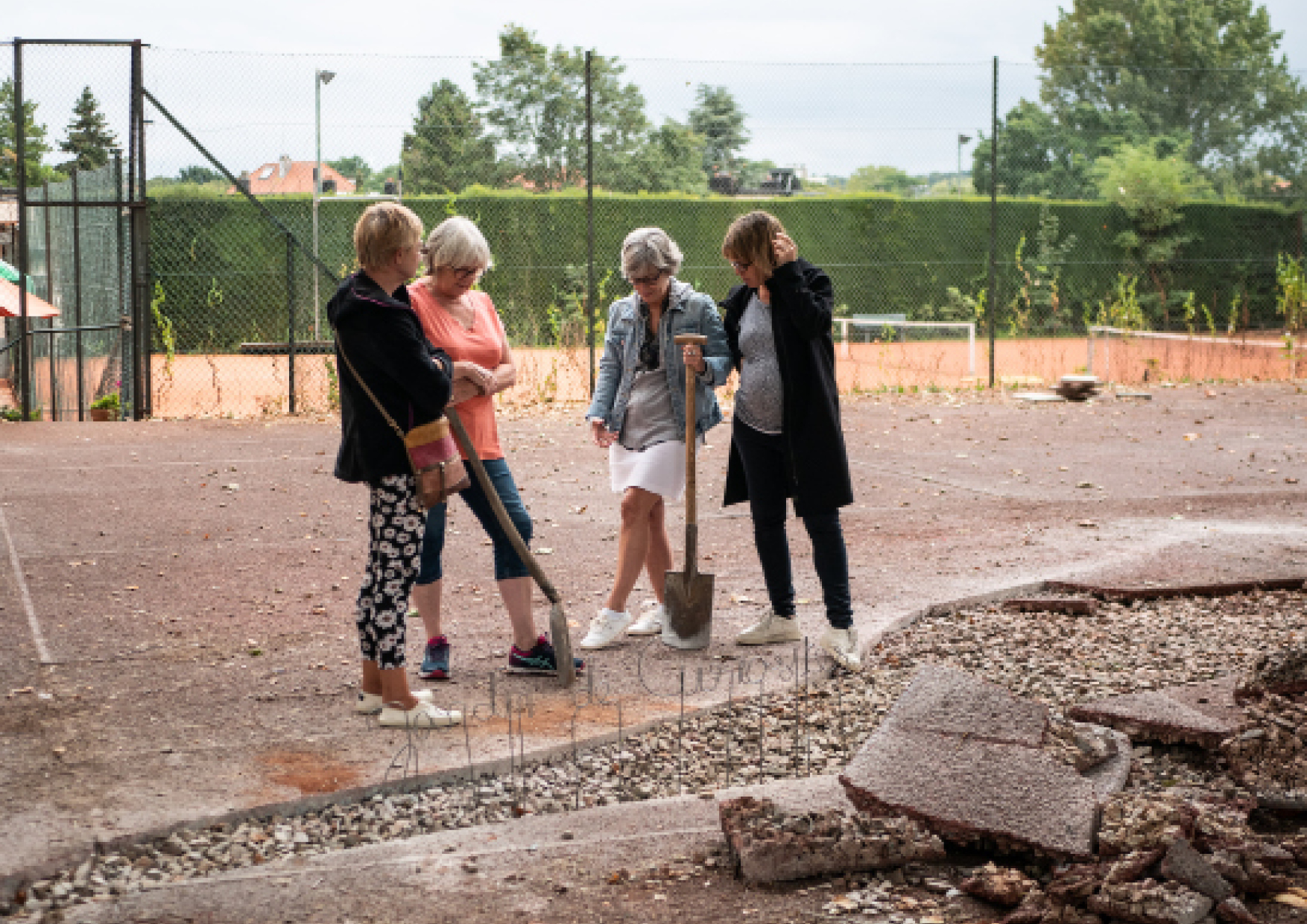
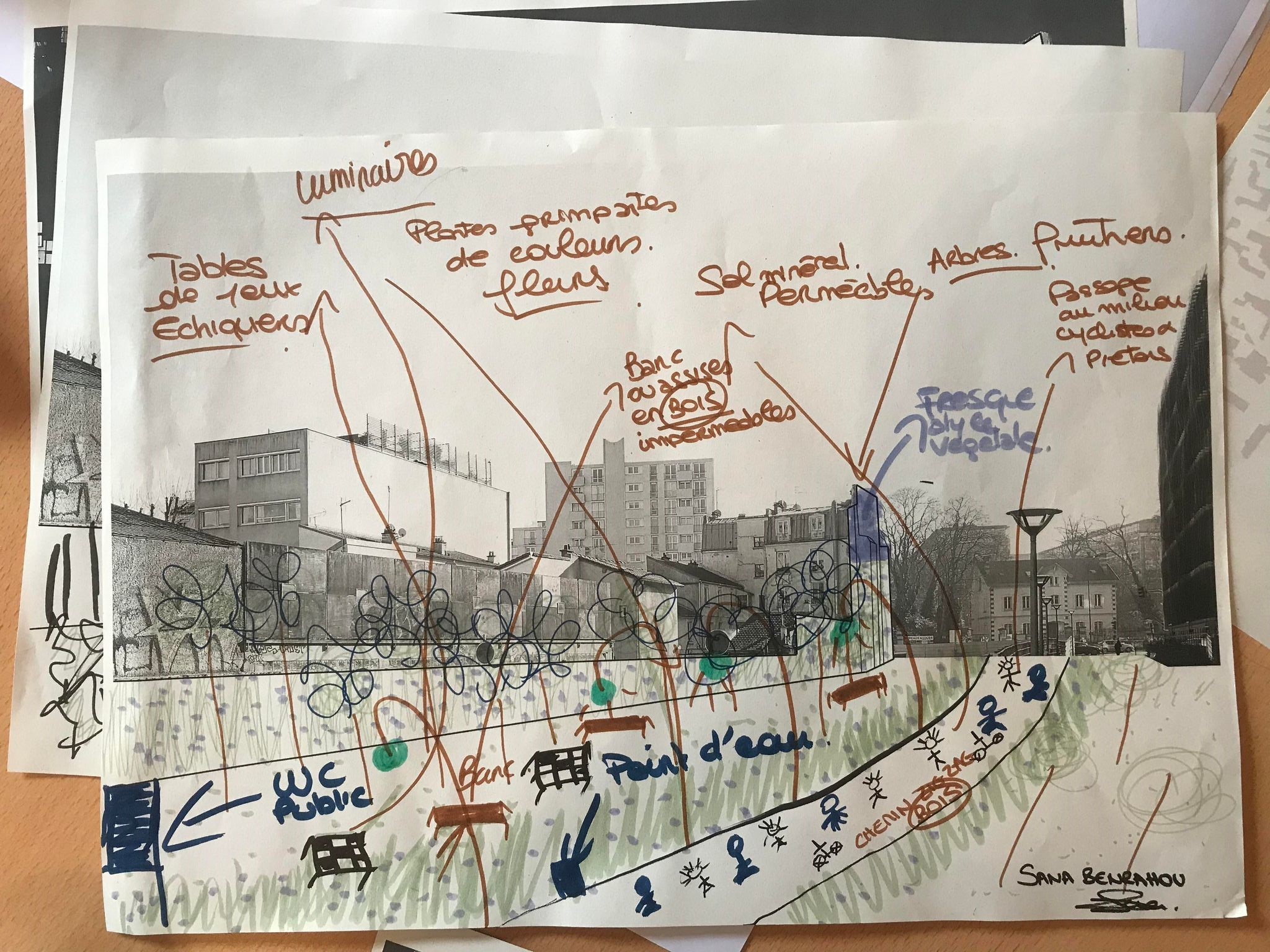
PARTICIPATORY WORKSHOP / ATELIER PARTICIPATIF
PARTICIPATORY WORKSHOP / ATELIER PARTICIPATIF
From start to finish, the users of the site are integrated in the project design process through participatory workshops. These workshops create a strong connection between the site and the users, established first through observation and rediscovery of the site, followed by the envisioning of a new space with the enrichment of our shared and individual experiences.
This method also aims to reveal in an open and uninhibited way the behind-the-scenes of the creative process. Regardless of its scale, a project cannot be formulated through the repetition of generic urban forms and landscape devices. As each site is different, each site calls for unique and adapted responses.
The format of the workshops are tailored for each project according to the project’s needs and objectives, participants’ needs, as well as available resources. Based on these variables, we formulate a cycle of action that best facilitates the exchange of feedback in order to proceed cohesively in an iterative workflow. Together with the inhabitants, we set up preliminary actions that promote new uses and relationships to the site.
Taktyk works regularly with local artists to foster culture in different ways: choreographers, videographers, graphic designers, scenographers, street artists... These collaborations explore connecting the site to the community through other forms of art, and unite the project uniquely with the local community.Together we work to create a space that not only serves its function harmoniously with its surroundings but also creates a space that becomes a part of the community. A space that belongs uniquely to its local community and changes with it as the needs of the community change.
Nous sollicitons et intégrons les habitants au cœur du processus de projet, d’abord pour faire découvrir le site puis pour en changer les perceptions. Ensemble, il s’agit d’imaginer de nouveaux usages tout au long de la mise en place du projet.
Cette méthode a aussi pour but de révéler de manière ouverte et décomplexée les coulisses du processus de création. Peu importe son échelle, le projet ne peut être envisagé comme la répétition de formes urbaines et dispositifs paysagers génériques. Chaque site apporte des réponses singulières et adaptées.
Le format de l’atelier est malléable, fabriqué à chaque projet selon l’objectif ciblé, les populations associées et la ressource disponible. Les outils proposés sont donc perpétuellement requestionnés.
Nous aspirons à proposer un cycle d’interventions assurant la variabilité des formats et la cohésion autour d’un projet itératif. Nous mettons en place des actions pionnières, co-construites avec les habitants, pour provoquer les usages et la relation au site.
Taktyk s’entoure régulièrement d’artistes locaux pour élargir le regard : chorégraphes, vidéastes, graphistes, scénographes, street-artists… Ces collaborations explorent l’insolite, le décalé, et fédèrent autour du projet pour en faire un véritable morceau de territoire. Ensemble, nous travaillons pour créer un espace non seulement au service de sa fonction et de son environnement, mais également un espace qui devient une partie de la communauté. Un espace qui appartient uniquement à ses usagers, et change à mesure que les besoins évoluent.
